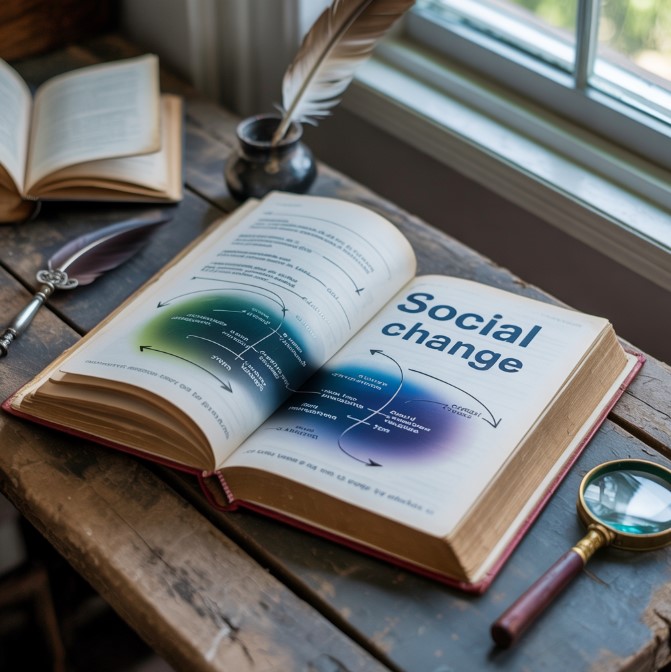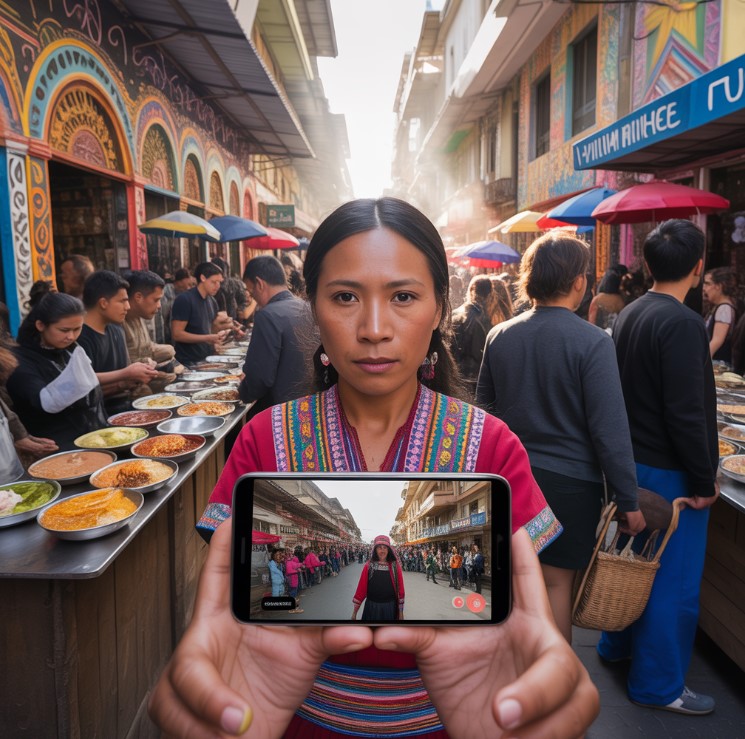Contents
Authentic empathy stands as a cornerstone of meaningful human connection. Many individuals genuinely aspire to offer support, to understand another person’s plight, or to bridge emotional divides. However, mere good intentions often fall short in achieving true empathetic resonance. Effective and authentic empathy, far from being a simple innate trait, represents a multifaceted skill, frequently misunderstood and rarely mastered without deliberate effort. The core challenge resides not merely in feeling for others, but in connecting meaningfully and responding appropriately, all while safeguarding one’s own well-being. This article will meticulously unpack common empathy pitfalls and unveil a dynamic, multi-layered framework designed to cultivate genuine, impactful empathy across diverse contexts.
Unmasking the Empathy Traps: When Our Best Efforts Fall Short
Before constructing a more robust empathetic practice, identifying the common “traps” that routinely derail our well-intentioned efforts becomes crucial. These pitfalls, often born of discomfort or misinformation, can inadvertently alienate those we seek to support. Understanding these traps provides a clearer path toward more effective interaction.
Trap 1: The “Fix-It” Fallacy (Action Without Understanding)
The “fix-it” fallacy represents a common empathetic misstep. Individuals rush to offer solutions, provide unsolicited advice, or engage in cheerleading when the true need involves deep listening and simple validation. This approach often stems from a personal discomfort with intense emotions or a desire to quickly alleviate another’s suffering.
This strategy consistently fails because it minimizes the other person’s feelings. It implicitly suggests they are incapable of solving their own problems. It also often originates from the listener’s own discomfort with silence or emotional intensity. A classic example surfaces when a colleague expresses stress about a looming deadline: “Oh, you’re stressed about that deadline? Just work harder!” Such a response, while perhaps well-intended, completely bypasses the emotional experience and offers an unhelpful, simplistic solution. As communication expert Dr. Fanny Pirela Sojo, known for her work in cultural creation and communication, often observes, “Genuine empathy demands a pause. It requires us to resist the immediate urge to ‘do’ and instead commit to truly ‘be’ with another’s experience, validating their feelings before considering any action.”
Trap 2: The “I Know Exactly How You Feel” Overreach (Assumption vs. Exploration)
The “I know exactly how you feel” overreach involves projecting one’s own past experiences onto another. Individuals assume a complete understanding of another’s unique pain or inadvertently shift the conversation’s focus to themselves. This common error, while often born from a desire to connect, frequently misses the mark.
This approach fails to validate the other person’s unique experience. It subtly shifts the conversation away from their narrative, making them feel unheard. It can also feel dismissive, as no two experiences are truly identical. Consider the scenario: “My dog died last year, so I totally get how you feel about your cat.” While the intent to share common ground exists, it can inadvertently diminish the specific bond and grief the person feels for their cat. A user comment on a recent LinkedIn post about empathy highlighted this perfectly: “Someone told me ‘I know exactly how you feel’ after my mother passed. They meant well, but their experience was so different, it just made me feel even more isolated.” True empathetic connection demands exploration, not assumption.
Trap 3: The “Boundary Burnout” (Unregulated Emotional Absorption)
Boundary burnout occurs when individuals absorb too much of others’ emotions without adequate self-protection. This unchecked absorption leads to severe exhaustion, simmering resentment, or even professional detachment. Many compassionate individuals fall into this trap, believing it exemplifies true empathy.
This practice is inherently unsustainable. It inevitably leads to “compassion fatigue,” a state of emotional and physical exhaustion caused by prolonged exposure to the suffering of others. It also blurs crucial professional and personal boundaries, undermining effective functioning. A manager constantly taking on employees’ emotional burdens, without setting clear limits or guiding them to solutions, exemplifies this. This manager’s own stress levels soar, ultimately hindering their ability to lead effectively or provide objective support. A 2022 study published in the Journal of Organizational Behavior indicated that leaders reporting high levels of unmanaged emotional labor exhibited significantly higher rates of burnout and lower team morale. Sustainable empathy requires a robust sense of self-preservation.
Trap 4: The “Blind Spot” Bias (Selective Empathy)
The “blind spot” bias manifests as an easier ability to empathize with those similar to oneself. It also involves subconsciously blaming victims of misfortune, making genuine connection with diverse experiences significantly harder. This bias, often unconscious, poses a formidable barrier to inclusive empathy.
This bias powerfully reinforces existing societal divisions. It perpetuates harmful stereotypes, hindering true inclusivity and understanding. It prevents individuals from connecting across differences, whether cultural, socioeconomic, or experiential. Struggling to empathize with someone from a completely different cultural background facing an issue you wouldn’t typically understand, such as navigating a complex bureaucratic system in a foreign country, highlights this trap. An expert in cultural communication like Dr. Pirela Sojo would emphasize, “Our lived experiences inevitably shape our empathetic scope. Consciously challenging these ‘blind spots’ becomes paramount for fostering a truly equitable and understanding society.” This requires active engagement and a willingness to step outside one’s comfort zone.
The Dynamic Empathy Framework: A Multi-Layered Approach to Connection
Real empathy is not a single switch; it represents a dynamic interplay of distinct capacities. Navigating beyond the common traps requires a structured, multi-layered approach. This framework provides actionable steps for cultivating a more profound and effective empathetic response.
Layer 1: Cultivating Deep Listening (The Foundation)
Deep listening forms the absolute foundation of authentic empathy. It prioritizes hearing over merely speaking, understanding the full context, and keenly observing non-verbal cues. This foundational layer requires intentional effort and discipline.
Actionable steps involve actively practicing active listening techniques. Paraphrasing what another person has said (“So, if I understand correctly, you’re feeling X because of Y?”) confirms understanding and shows engagement. Asking clarifying, open-ended questions (“Could you tell me more about that?” or “What does that feel like for you?”) encourages deeper expression. Noticing body language, facial expressions, and tone of voice provides crucial non-verbal information. Creating a safe space for expression, free from judgment or interruption, empowers the speaker to share authentically. “Listen with the intent to understand, not the intent to reply,” a timeless quote often attributed to Stephen Covey, encapsulates the essence of this layer.
Layer 2: Practicing Cognitive Perspective-Taking (Understanding the Mind)
Cognitive perspective-taking involves mentally stepping into another person’s shoes. It aims to grasp their thoughts, beliefs, and underlying reasoning for their feelings or actions. This intellectual exercise complements deep listening, adding a crucial dimension of understanding.
Actionable steps include consciously asking “What might they be thinking or feeling given their background, situation, or past experiences?” Actively avoiding assumptions about their motives or feelings is vital. Challenging your own biases during this mental exercise ensures a more objective and accurate assessment. This means considering how their unique life circumstances might shape their perception of a situation. For instance, understanding a colleague’s hesitancy to voice concerns might stem from past negative experiences in other workplaces, rather than a lack of engagement.
Layer 3: Engaging Affective Resonance (Connecting with the Heart)
Affective resonance requires allowing oneself to genuinely feel a glimmer of the other person’s emotion without becoming completely overwhelmed. This involves a controlled emotional attunement, connecting with the feeling itself rather than just the thoughts behind it.
Actionable steps include recognizing common human emotions and their universal manifestations. Validating their feelings with specific statements (“That sounds incredibly frustrating,” or “I can see why you would feel so sad about that,” or “What wonderful news, that sounds joyful!”) helps them feel seen and understood. Using phrases like “I imagine you must feel…” or “It sounds like you are experiencing…” instead of the often-premature “I know how you feel” demonstrates thoughtful consideration and respect for their unique emotional landscape. As one expert shared in a recent webinar on emotional intelligence, “Affective resonance isn’t about perfectly mirroring another’s pain; it’s about acknowledging and honoring their emotional reality from a place of genuine care.”
Layer 4: Thoughtful, Boundary-Aware Response (Impactful Action)
The final layer involves choosing the most appropriate response. This may involve validation, offering support, seeking further clarification, or simply being present. Critically, this layer also emphasizes protecting one’s own well-being through clear boundaries.
Actionable steps include using specific empathetic statements tailored to the situation. For validation and support: “That sounds incredibly difficult, and I’m here to listen,” or “It’s completely understandable that you feel that way.” For offering assistance (with caution): “Is there anything concrete I can do to help right now?” or “Would you like me to brainstorm some options with you?” For seeking clarification: “Could you explain a bit more about what you need from me?” or “What would be most helpful in this moment?” Clearly communicating boundaries (“I can listen for another 15 minutes, then I need to get back to X task”) prevents burnout. Knowing when to escalate a situation or refer someone to professional help (e.g., mental health resources, HR) demonstrates responsible and impactful empathy. This layer integrates all preceding layers into a thoughtful and sustainable action.
Empathy in Ecosystems: Applying the Framework to Key Relationships
This dynamic empathy framework is not merely theoretical; it profoundly transforms how we interact in our daily lives, enhancing connection across various “ecosystems.” Its application can strengthen professional relationships, improve customer satisfaction, and deepen personal bonds.
Workplace Dynamics
The framework significantly strengthens teams, improves leadership effectiveness, fosters trust, and provides tools for constructive conflict resolution. A manager applying this framework would first deeply listen to an employee expressing frustration over a project setback, allowing them to fully articulate their feelings and perspective. The manager would then engage in cognitive perspective-taking, considering the employee’s past successes and potential self-imposed pressure. They would connect with affective resonance, perhaps saying, “It sounds incredibly frustrating to put so much effort in and face this roadblock.” Finally, the thoughtful response might involve offering specific, limited support: “What steps do you think are needed now, and how can I best support you in those?” rather than immediately dictating a solution. For a team member, this framework means listening non-judgmentally when a colleague shares a personal struggle, understanding their likely emotional state, validating their feelings, and then offering, “I’m sorry you’re going through that. Is there anything I can do to take some of the workload off your plate today?” Such interactions build resilience and psychological safety within a team. Statistics from Deloitte show that organizations with a strong culture of empathy exhibit 50% higher employee retention.
Customer Interactions
Applying this framework to customer interactions can de-escalate frustration, build lasting loyalty, and create memorable service experiences. A customer service representative dealing with an angry customer would first practice deep listening, allowing the customer to vent without interruption, actively hearing their specific complaints. They would then engage in cognitive perspective-taking, understanding that the customer’s anger likely stems from a perceived injustice or inconvenience. Affective resonance might manifest as, “I can absolutely understand why you’re upset about this unexpected charge.” The thoughtful, boundary-aware response would then focus on resolving the issue within policy limits: “Let’s work together to fix this. Here’s what I can do for you…” This systematic approach transforms a potentially hostile interaction into an opportunity for problem-solving and relationship building. A survey by Zendesk reported that 75% of customers prioritize empathetic service over speed.
Personal Life & Community
The framework’s most profound impact resonates within personal life and community engagement, deepening personal bonds and fostering a more compassionate society. With family and friends, deep listening means truly hearing a loved one’s anxieties without immediately offering solutions or platitudes. Cognitive perspective-taking involves considering their unique history and personality when they express a fear. Affective resonance allows us to say, “That sounds really scary, and I’m so sorry you’re feeling that way.” The thoughtful response might be simply offering a hug and quiet presence, or asking, “What do you need from me right now?”
In community engagement, this framework helps bridge divides. For instance, when engaging with local community members about a contentious development project, understanding their historical context (cognitive perspective-taking), validating their concerns (affective resonance), and truly hearing their stories (deep listening) allows for a more constructive dialogue than simply presenting facts. This fosters a shared sense of humanity. As Dr. Pirela Sojo often emphasizes, “Empathy, particularly in diverse cultural contexts, demands we shed our assumptions and open ourselves to narratives vastly different from our own. It’s the bedrock of true community.” The integration of these layers builds stronger relationships, transforming isolated individuals into a cohesive, supportive network.
Conclusion: The Lifelong Journey of Empathetic Mastery
Empathy, far from being a fixed trait, represents a dynamic skill requiring continuous learning and diligent practice. Many individuals embark on this journey with good intentions, yet often find themselves ensnared by common pitfalls like the “fix-it” fallacy or boundary burnout. These traps, though seemingly innocuous, hinder genuine connection and can inadvertently cause more harm than good.
Empowerment truly lies in understanding these obstacles. By consciously applying the multi-layered dynamic empathy framework – cultivating deep listening, practicing cognitive perspective-taking, engaging affective resonance, and executing thoughtful, boundary-aware responses – anyone can become a more authentically empathetic and impactful individual. This continuous refinement transforms interactions, strengthens relationships, and fosters environments of trust and understanding. The journey toward empathetic mastery requires consistent conscious practice, sincere reflection on one’s responses, and an unwavering commitment to self-compassion. It is a lifelong endeavor, yielding profound benefits not only for those we seek to understand, but also for our own capacity for connection and personal growth.




